Vico Magistretti

This article has multiple issues. Please help improve it or discuss these issues on the talk page. (Learn how and when to remove these messages)
|
Vico Magistretti | |
|---|---|
 | |
| Born | October 6, 1920 |
| Died | September 19, 2006 (aged 85) |
| Nationality | Italian |
| Alma mater | Politecnico di Milano |
| Occupation | Architect |
| Awards | Gold Medal at the 1951 Triennale, Grand Prix at the 1954 Triennale, two Compasso d'Oro awards in 1967 and 1979, the Gold Medal of the Chartered Society of Industrial Artists & Designers in 1986 |
| Practice | Design and architecture |
| Buildings | QT8 Church[1] |
Vico Magistretti (October 6, 1920 – September 19, 2006) was an Italian architect who was also active as an industrial designer, furniture designer, and academic. As a collaborator of humanist architect Ernesto Nathan Rogers, one of Magistretti's first projects was the "poetic" round church in the experimental Milan neighbourhood of QT8. He later designed mass-produced appliances, lighting, and furniture for companies such as Cassina S.p.A., Artemide, and Oluce. These designs won several awards, including the Compasso d'Oro and the Minerva Medal of the Chartered Society of Industrial Artists & Designers in 1986.[1][2][3]


Early life and education
[edit]Vico Magistretti was born on October 6, 1920, in Milan, Italy. He was the son of an architect.[1] During the second world war, to avoid being deported to Germany, on September 8, 1943, he left Italy during his military service and moved to Switzerland.[4] While in the country he taught at the local university and took courses at the Champ Universitaire Italien in Lausanne.[4] He returned to Milan in 1945,[4] graduating from the Politecnico di Milano University in 1945.[1]
While in Switzerland he met Ernesto Nathan Rogers, who turned out to be his maestro.[4] According to The Guardian, "He soon came under the influence of the architect Ernesto Nathan Rogers, whose humanist ideas for the reconstruction of postwar Italy inspired a whole series of intellectuals. At that time Magistretti took part in work on the extraordinary experimental neighbourhood on the edge of Milan known as QT8, where a group of architects and planners were given complete freedom. Magistretti built its "poetic round church" Santa Maria Nascente.[1]
Work and career.
[edit]After graduation he worked at the firm owned by his father, Pier Giulio, with the architect Paolo Chessa.[4]
He worked initially in urban design in Milan. In the 1950s he moved into the field of mass-produced furniture and lamps. Some became museum pieces. Among other, he worked for the following companies: Artemide,[5] Cassina,[6] De Padova,[7] Flou,[8] Fritz Hansen,[9] Kartell,[10] Schiffini.[11]
According to The Guardian, "His first great success came with the world famous Carimate chair produced by the Cassina company. The chair was a bestseller for years and mixed rural simplicity (the straw of the seat) with urban sophistication. There were the smooth lines of the wooden supports and legs, the colour, the pop-art bright red frame and elements of Scandinavian design."[1]
Awards
[edit]Vico Magistretti received many awards, among which: the Gold Medal at the 1951 Triennale, the Grand Prix at the 1954 Triennale, two Compasso d'Oro awards in the years 1967 and 1979 as well as the Gold Medal of the Chartered Society of Industrial Artists & Designers in 1986.[1]
| Year | Award | Nominated work | Category | Result |
|---|---|---|---|---|
| 1951 | Triennale | Magistretti | Gold Medal | |
| 1954 | Triennale | Magistretti | Grand Prix | |
| 1967 | Compasso d'Oro | Magistretti | Won | |
| 1979 | Compasso d'Oro | Magistretti | Won | |
| 1986 | Chartered Society of Industrial Artists & Designers | Magistretti | Gold Medal |
Affiliations and fellowships
[edit]He taught for 20 years at the Royal College of Art (RCA) in London and was appointed as a Royal Designer for Industry (RDI).[1] He also taught at Domus Academy in Milan[12] and was an honorary member of the Royal Scottish Incorporation of Architects.
Influence and legacy
[edit]Magistretti's works have been exhibited widely throughout the world, and is held in the collections of many museums including the Pompidou Centre[13] in Paris, the Museum of Modern Art and Metropolitan Museum in New York,[14] the Philadelphia Museum of Art,[15] Art Institute of Chicago,[16] and the ADI Design Museum in Milan.[17][1]
In 2021, to celebrate the centenary of Magistretti's birth the Palazzo dell’Arte of the Triennale in Milan staged an exhibition his life's work.[18][19]
The designer Jasper Morrison, a former student of Magistretti's at the Royal College of Art, recollected a conversation with Magistretti about the practice of industrial design:
We met at Linate [airport], we were getting on the plane to London, he was 75 years old, I was 35, and he told me: "We are the luckiest people in the world to do this job". That phrase echoed in me, I was already so disappointed at the beginning of my career, but he was retired and full of enthusiasm.[20]
Magistretti's wife Paola died in 1998. He died on September 19, 2006, and is survived by a son, Stefano, and daughter, Susanna.[1] His legacy is overseen by the Vico Magistretti Foundation.[21][22]
Gallery
[edit]- Carimate Chair Back 1959
- Eclisse lamp 1965
- Eclisse lamp 1965
- Oluce lamp 1977
- Chaise Longue 1996
- Dalù lamp
- Architecture by Magistretti in Lombardy (photographed by Paolo Monti)
- Building in corso Europa 22, Milan (1955-1957), detail
- Villa Arosio, Arenzano (1958): interiors
- Building in via Leopardi, Milan (with Guido Veneziani), 1961
- Carimate Golf club (with Guido Veneziani)
- Milan, tower house in piazzale Aquileia 8, 1964-1965
- Torre del Parco, Milan (1953–56, with Franco Longoni). Photo by Paolo Monti
Publications
[edit]- Neri, Gabriele; Magistretti, Vico; Fondazione La Triennale di Milano (2021). Vico Magistretti : architetto milanese (in Italian). Milano. ISBN 978-88-918-9009-2. OCLC 1253374091.
{{cite book}}: CS1 maint: location missing publisher (link) - Magistretti, Vico; Koivu, Anniina; Bimmerlein, Julia (2020). Vico Magistretti : stories of objects. Zurich. ISBN 978-3-03863-049-4. OCLC 1255365184.
{{cite book}}: CS1 maint: location missing publisher (link)
References
[edit]- ^ a b c d e f g h i j Foot, John (October 17, 2006). "Vico Magistretti obituary" – via The Guardian.
- ^ "Vico Magistretti. Eclisse Table Lamp. 1965 | MoMA". The Museum of Modern Art. Retrieved 2023-01-27.
- ^ "Vico Magistretti. Atollo Table Lamp (model 233). 1977 | MoMA". The Museum of Modern Art. Retrieved 2023-01-27.
- ^ a b c d e "Vico Magistretti Foundation: Bio".
- ^ "Artemide – Vico Magistretti". www.artemide.com. Retrieved 2022-11-29.
- ^ "Vico Magistretti: Biography & Projects | Contemporary designers | Cassina". www.cassina.com. Retrieved 2022-11-29.
- ^ "Vico Magistretti: designer De Padova". De Padova. Retrieved 2022-11-29.
- ^ "Designers – Flou". www.flou.it. Retrieved 2022-11-29.
- ^ "Vico Magistretti". Fritz Hansen. Retrieved 2022-11-29.
- ^ "Kartell". Fuorisalone.it (in Italian). Retrieved 2022-11-29.
- ^ Testino, Arianna (31 January 2020). "Cucina Cina, Schiffini Mobili Cucine 1986 © Vico Magistretti, Fondazione studio museo Vico Magistretti | Artribune" (in Italian). Retrieved 2022-11-29.
- ^ Fiell, Charlotte; Fiell, Peter (2005). Design of the 20th Century (25th anniversary ed.). Köln: Taschen. p. 438. ISBN 9783822840788. OCLC 809539744.
- ^ "Vico Magistretti, Créateur de mobilier". Le Centre Pompidou. Retrieved 2023-01-27.
- ^ ""Vico" Armchair". www.metmuseum.org. Retrieved 2023-01-27.
- ^ ""Dalù" Table Lamp". philamuseum.org. Retrieved 2024-07-18.
- ^ "Eclisse Table Lamp". Art Institute of Chicago. 1966. Retrieved 12 August 2024.
- ^ "ECLISSE". ADI Design Museum. Retrieved 2023-01-27.
- ^ "Vico Magistretti Architetto milanese | Triennale Milano". www.triennale.orgeventi (in Italian). Retrieved 2023-01-26.
- ^ Molteni, Francesca (2020-06-24). "Casa Vogue: portrait of Vico Magistretti". Vogue (IT) (in Italian). Retrieved 2023-01-26.
- ^ "Morrison: "Gli oggetti non devono urlare mai"" [Objects should never shout]. la Repubblica (in Italian). 2021-10-25. Retrieved 2022-11-20.
- ^ "Homepage | Fondazione Vico Magistretti". www.vicomagistretti.it.
- ^ "Vico Magistretti Foundation". Museo Bagatti Valsecchi. 2017-02-27. Retrieved 2023-01-26.
- ^ "Casa Arosio, Arenzano". archivio.vicomagistretti.it (in Italian). Retrieved 2024-07-21.
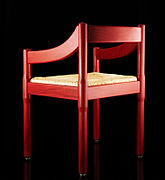



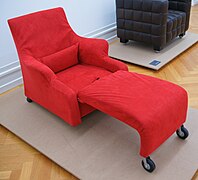


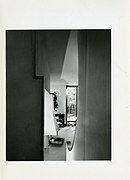
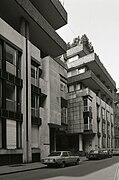
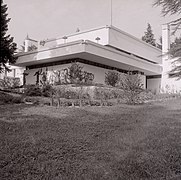

![Villa Arosio, Arenzano (1958)[23]](http://upload.wikimedia.org/wikipedia/commons/thumb/5/59/Paolo_Monti_-_Servizio_fotografico_%28Arenzano%2C_1959%29_-_BEIC_6356024.jpg/228px-Paolo_Monti_-_Servizio_fotografico_%28Arenzano%2C_1959%29_-_BEIC_6356024.jpg)
